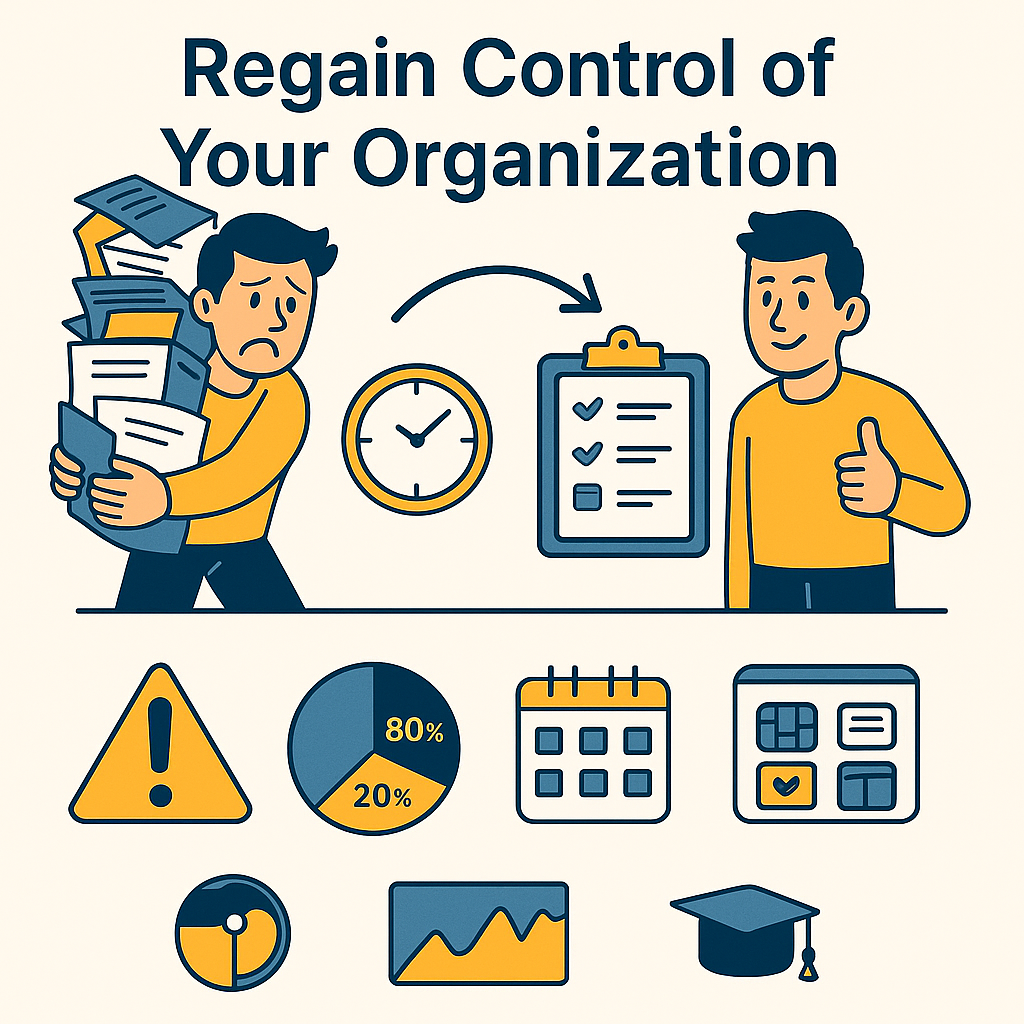Introduction: Communication isn’t just about talking — it’s about making yourself understood
If you’ve ever heard someone say, “Oh… I thought you meant something else,” then you’ve seen firsthand how poor communication can derail even the best of plans.
Misunderstandings, delays, duplicated work, unspoken tensions — they rarely come from bad intentions. They come from:
- Too many tools used inconsistently,
- Messages scattered across platforms,
- No clarity about who communicates what, where, when, and to whom.
These seemingly minor issues create friction that slows everyone down, clouds decision-making, and builds unnecessary stress. The good news? You don’t need more meetings — you need better interactions.
The goal: From noise to meaningful connection
The purpose of this second lever is not to increase the volume of communication. It’s to make every exchange clearer, faster, and more purposeful.
🎯 The aim is to better understand each other — so we can better collaborate.
That means:
- Less confusion, more alignment.
- Fewer interruptions, more focus.
- Fewer assumptions, more empathy.
Key areas to work on: reduce friction, boost flow
Here are some of the practical actions I help teams implement:
1. Audit and clarify communication channels
What do we use for what?
Decide — together — which channels are for what kind of message. For example:
- Slack = quick updates, async threads
- WhatsApp = urgent only
- Notion or Google Docs = long-form documentation or meeting notes
- Email = external communication
Consistency is key. When everyone knows where to go for what, stress goes down.
2. Group messages to reduce constant interruptions
You don’t have to be “always on.”
Create communication slots. For example:
- Team updates between 10–11 a.m. and 4–5 p.m.
- No Slack notifications outside of that (except emergencies)
This helps protect deep work and reduces the drain of being permanently available.
3. Create moments for proactive conversation
Don’t just wait to be pinged. Ask.
Simple check-ins like “How can I support you today?” can change the whole team dynamic. Build in:
- Weekly standups,
- End-of-day 10-minute huddles,
- One-on-ones with a listening-first attitude.
4. Adapt the style to the person
Not everyone communicates the same way.
Some are visual, others are verbal. Some prefer async writing, others quick verbal chats. A good team doesn’t force everyone into the same mold — it adapts.
A quick tip: ask people how they prefer to receive updates or feedback.
Tools are not the problem — habits are
Choosing the right tools helps, but they only work if your team agrees on how to use them.
What matters most:
- Defining when to use each tool,
- Setting expectations (e.g. reply time, format),
- Having templates or shared norms (e.g. meeting notes always in Notion).
Examples of effective combinations:
- Slack + Notion for async remote teams,
- Google Calendar for shared agendas,
- Loom or video notes for distributed updates.
Conclusion: Don’t communicate more. Communicate better.
Better communication is not about quantity. It’s about:
✅ Reducing noise,
✅ Making space for real connection,
✅ Ensuring everyone knows how and when to speak — and most importantly, to be heard.
So…
What’s creating the most friction in your team’s communication right now? Too many pings? No clarity on who decides what? Conflicting styles?
I’d love to hear your experience — feel free to share it in the comments or message me directly.


Leave a Reply